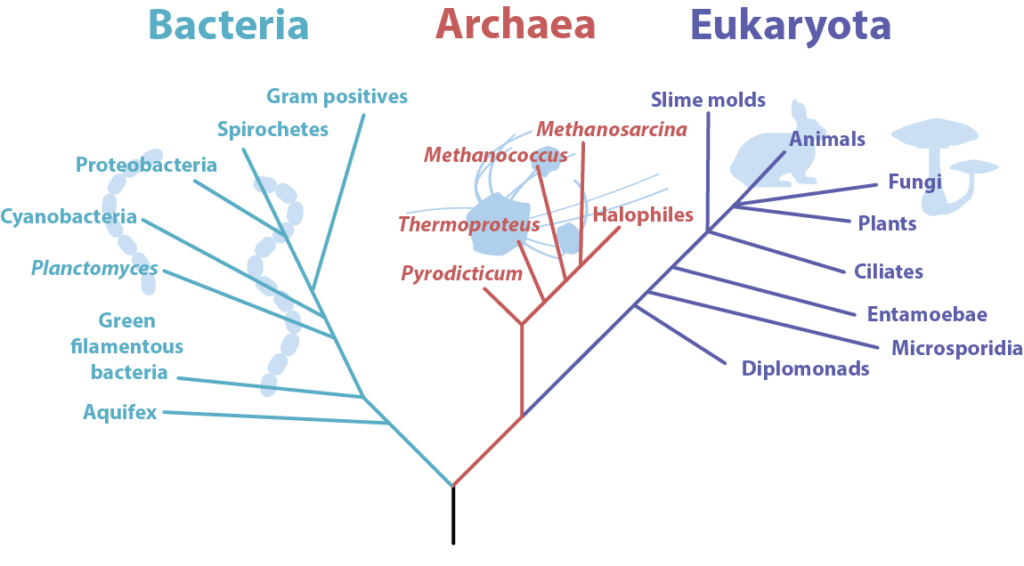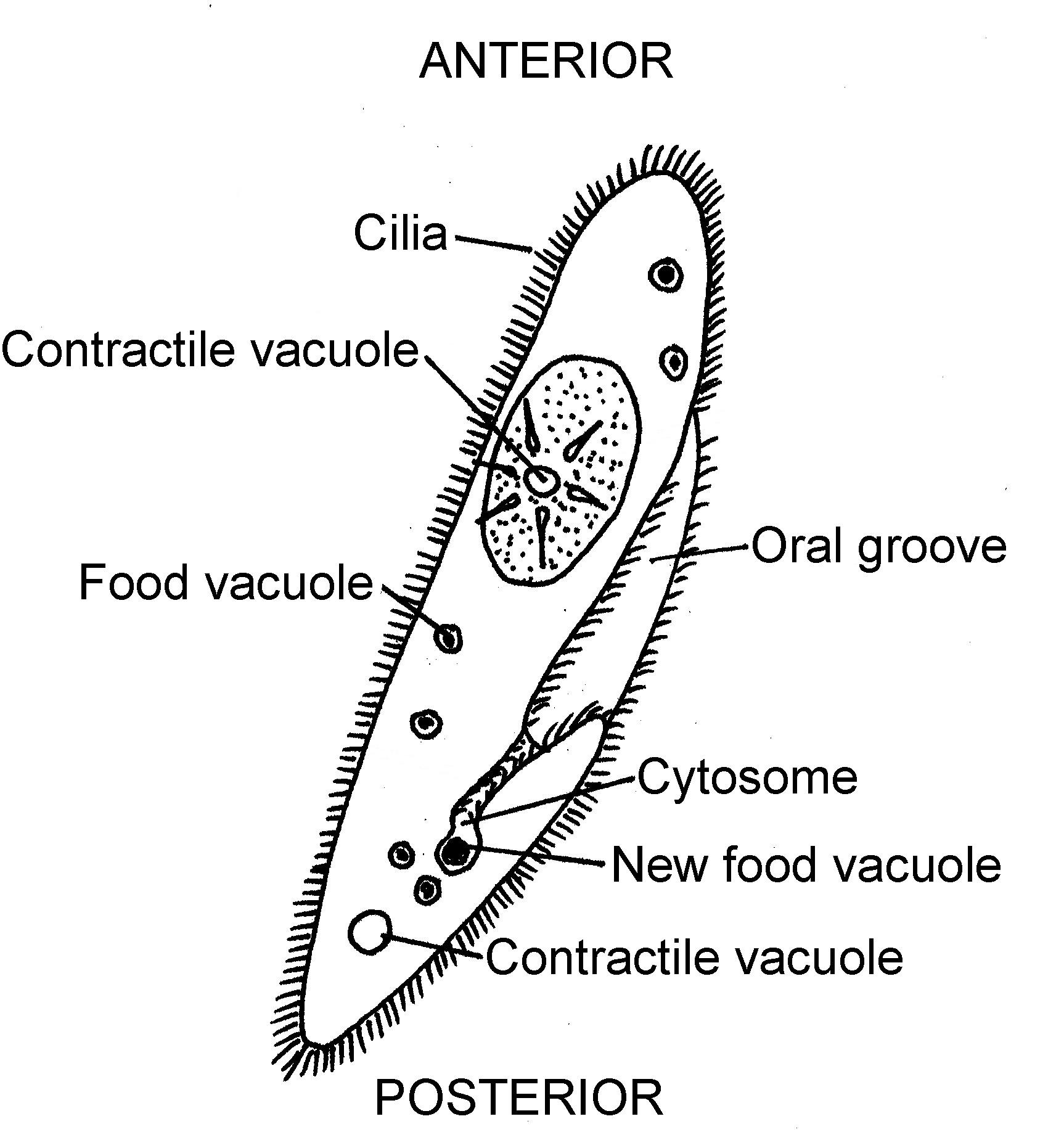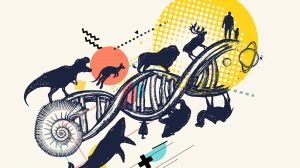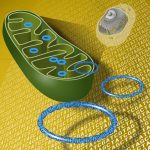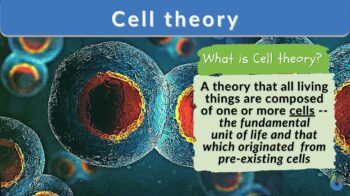
Cell theory
n., [sɛl ˈθɪɚ.i]
Definition: Theory about cells to explain living things’ composition, function, and origin
Table of Contents
What Is Cell Theory?
Biological cell theory explains the idea of organismal constitution, structure, and function. It describes how we all start our lives with a cell that has been contributed by our parents’ existing cells. In its full integrity, a cell is an independently functioning and self-sustaining entity that arises from a pre-existing cell and gives rise to new cells in its lifetime.
In the field of biology, we define cell theory as a scientific explanation or scientific theory of how living organisms are built. This theory emphasizes the fact that all living beings (living organisms) are made up of a basic life unit called “cell” and each of the body’s cells has started its life journey from a pre-existing cell only! All cells have the same basic chemical composition.
This theory was put together in the mid-19th century by two scientists named Matthias Schleiden and Theodor Schwann. The theory was later improved by Rudolf Virchow who explained that all cells have arisen from some pre-existing cells. Both speculated that cells originate due to spontaneous generation. There are 3 main principles of cell theory (cellular theory) as discussed below.
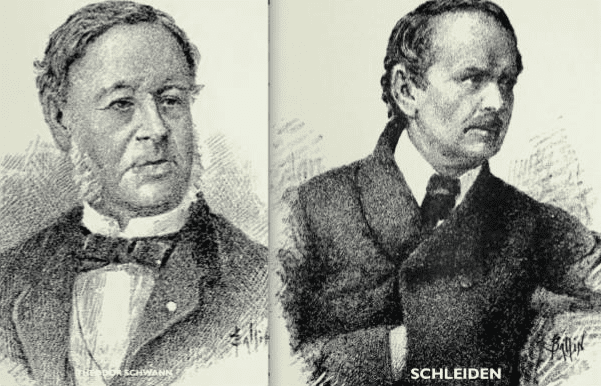
Watch this vid about cell theory:
Biology definition:
A cell theory is a scientific theory stating that:
- All living things are made up of one or more cells.
- The cell is the structural and functional unit of all living things.
- Cells come from pre-existing cells through the process of division.
- All cells are the same in regard to chemical composition.
- All energy flow (i.e. metabolism and biochemistry) of life occurs within the cell.
The cell theory is credited to the scientists, particularly, Theodor Schwann, Matthias Jakob Schleiden, and Rudolf Virchow.
3 Parts Of Cell Theory
The three principles of cell theory are discussed as the 3 parts of cells theory here. The cell theory states:
- All living organisms are constituted of cells.
Explanation: Schleiden (a botanist) and Schwann (a physiologist), both separately concluded that cells are the basic structural as well as functional units of all living organisms. While Schleiden specifically studied plant tissues and proposed that all plants are composed of cells, Schwann extended this idea to animal cells, suggesting that all animal tissues are also made up of cells. Their combined observations led to the realization that cells are the building blocks of life. - The cell is the basic unit of life in living organisms; speaking both structurally as well as functionally.
Explanation: Both Schleiden and Schwann recognized that cells are not just static units but are also essential for organismal functions. Cells carry out specific functions and activities necessary for life and the overall structure and function of an organism depend on the interactions and activities of its cells. Energy flow occurs within all cells. - All cells have arisen at some point in time from preexisting cells.
Explanation: Both scientists observed that cells did not arise spontaneously but instead originated from the division of pre-existing cells. This concept, known as cell division or cell reproduction, is a fundamental process in biology and is central to the growth, development, and reproduction of all living organisms.
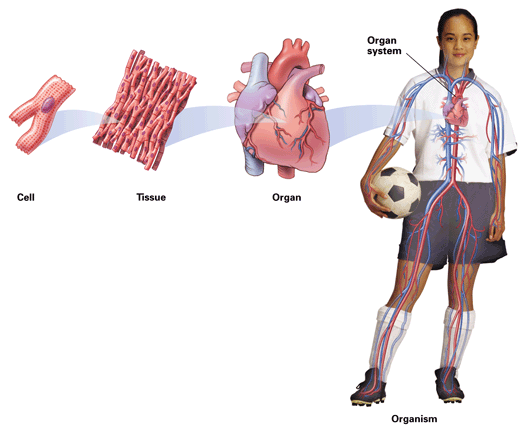
Cell Theory Examples
We can discuss the core concepts of cell theory giving numerous examples across the diversity of living organisms. The cell theory beautifully explains how the human cell body is composed of trillions of cells, each with specific functions.
Cells combine to form tissues (e.g., muscle tissue, nerve tissue), which then make up organs (e.g., heart, brain), which further constitute specific organ systems (e.g., circulatory system, nervous system).
Understanding the cell theory is essential for comprehending the structure and function of organs and organ systems in the human body. Likewise, when we think about microorganisms like bacteria, archaea, protists, or fungi, don’t we all wonder how these microorganisms come to life? Even all of these microorganisms consist of one or more cells.
But what do you think about viruses? Are viruses too made up of cells?
We have a special section on how viruses defy cell theory and all of its 3 principles: Viruses and the Cell Theory: Unraveling the Enigmatic Nature of Viral Life
Single-Celled Organisms
The cell theory applies to single-celled organisms just as it does to multicellular organisms. Single-celled organisms, also known as unicellular organisms, consist of a single cell that carries out all the necessary functions of life. Several examples of single-celled organisms illustrate the relevance of the cell theory:
- Bacteria: Bacteria are unicellular microorganisms, each representing a complete living entity. Within the confines of a bacterial cell, all the necessary structures are present to carry out vital life processes like metabolism, reproduction, and response to the environment. Bacterial cells possess a plasma membrane, genetic material (DNA for DNA replication), ribosomes, and cell walls. They reproduce through binary fission, a process in which one cell divides into two identical daughter cells.Bacteria serve as living examples of the cell theory. As single-celled organisms, they embody the core principles of the theory; “showcasing the basic unit of life”, “independent functionality”, and “one cell giving rise to the next cell”, thus underscoring their significance in the broader study of biology.
Explanation: Schleiden (a botanist) and Schwann (a physiologist), both separately concluded that cells are the basic structural as well as functional units of all living organisms. While Schleiden specifically studied plant tissues and proposed that all plants are composed of cells, Schwann extended this idea to animal cells, suggesting that all animal tissues are also made up of cells. Their combined observations led to the realization that cells are the building blocks of life.
Figure 3: A spiral form of bacteria as observed under the microscope after staining. Image Credit: Microbehunter - Archaea: Similar to bacteria, archaea are unicellular microorganisms. Archaea are fundamental to the cell theory as they exemplify the theory’s principles by existing as complete, independent living units. Each archaeal cell contains all the necessary structures and components for life, including a cell membrane, genetic material (DNA), and unique structures. Archaea engage in metabolism, reproduce through binary fission, and respond to their environment, demonstrating the key characteristics outlined in the cell theory. As such, archaea provide essential insights into the fundamental unit of life and reinforce the significance of the cell theory in understanding the diversity and complexity of living organisms.

- Protists: Protists form a diverse group of eukaryotic unicellular organisms. Some protists like Paramecium and Amoeba boast of their complex cellular structures with specialized organelles like contractile vacuoles and cilia or pseudopods for movement. Protists embody the cell theory’s core principles by functioning as complete, independent living entities. Each protist cell contains all essential organelles and structures required for life, reflecting the basic unit of living organisms.

Figure 5: Paramecium with its specialized cellular structures called contractile vacuoles and cilia for movement. Image Credit: Oklahoma Biological Survey - Yeast: Yeast is a group of unicellular fungi displaying the principles of the cell theory. As a single-celled organism, each yeast cell operates as a complete and autonomous living unit. Within its structure, yeast cells possess vital organelles like a nucleus, mitochondria, and endoplasmic reticulum, fulfilling the prerequisites for life. They engage in metabolism, generating energy flow and carrying out essential cellular functions, thereby exemplifying the cell theory’s core principle of self-sufficiency. Yeast reproduces through budding which testifies the principle of cells arising from pre-existing cells. Through yeast, the cell theory is demonstrated in action underscoring its relevance in understanding the fundamental nature of life.
In Plants
The study of plants and the cell theory have an intertwined history that dates back to the groundbreaking discoveries of Robert Hooke. In 1665, Hooke examined a thin slice of cork under a microscope and observed small box-like structures which he named “cells” due to their resemblance to small rooms or chambers. This marked the initial discovery of cells and it laid the foundation for future research in plant biology.
» Plants and Cell Theory
The cell theory’s discovery was initiated by Robert Hooke’s observations of cork cells which eventually led to the understanding that all plants consist of cells. Also, the theory’s validity is firmly established in plant biology as it explains plant structure, growth, development, and reproduction. It remains a vital concept in modern plant sciences that guide research and enhance our understanding of the complexities and wonders of plant life.
The cell theory’s validity in plants is well-established and remains a fundamental principle in understanding plant structure and function.
- According to the cell theory, all plants are composed of cells.
- These cells are the basic structural and functional units of plant life. As we explore plant tissues and organs, we find that they are all made up of various types of cells; each with specific roles and functions. For instance, plant leaves consist of photosynthetic cells that harness sunlight, while plant roots contain specialized absorbent cells responsible for water and nutrient uptake.

Figure 7: Roots cells are modified for absorption function. But all cells of plants, whether they are the cells that constitute the leaves or the root, follow cell theory! Image Credit: IGCSE - The cell theory also explains how plants grow and develop. As plants increase in size, it is due to the proliferation and differentiation of the pre-existing cells. The division of plant cells through processes like mitosis results in new cells that contribute to growth and tissue repair.
» Plants and Cell Theory’s Application
The cell theory’s application extends to plant reproduction. In sexual reproduction, the union of male and female gametes (specialized reproductive cells) leads to the formation of a new life i.e. a zygote. This zygote is a fertilized egg cell that follows the cell theory and gives rise to a new plant. This explains all the 3 principles of cell theory (composition, function, and origin).
In Animals
The cell theory is equally applicable and essential in understanding animals, just as it is in plants or other cells. The cell theory is fundamental to comprehending the intricate organization, growth, and functioning of animals. The unifying principles of cell theory connect the diverse array of animal species.
The cell theory’s validity in animals is well-established and remains a fundamental principle in understanding animal structure and function.
- The cell theory posits that all living organisms are composed of cells and animals are no exception.
- Animals, as multicellular organisms, exhibit a diverse range of cell types and tissues that perform specialized functions. From nerve cells transmitting electrical signals in the brain to muscle cells contracting for movement, each type of cell contributes to the overall functioning of the animal’s body. Animal development and growth are also governed by the cell theory. During embryonic development, a single fertilized egg undergoes repeated cell divisions, leading to the formation of various cell types, tissues, and organs, ultimately resulting in a fully formed animal.
- Additionally, the process of cell reproduction known as mitosis plays a crucial role in animal growth, tissue repair, and maintenance. When tissues are damaged, cells divide to replace the pre-existing injured or dead cells to ensure the animal’s survival and well-being.
» Animals and Cell Theory’s Application
The cell theory can be applied to explain the cellular basis of animal physiology. Cells are responsible for performing essential functions such as cellular respiration, digestion, and metabolism. This enables animals to extract energy from food and carry out life processes.
Other Organisms
The cell theory remains valid across all classes of organisms. From prokaryotes to eukaryotes and from unicellular to multicellular organisms, the tenets of cell theory hold their validity in all of them.
Contributions To Cell Theory
Many scientists have contributed to the development and understanding of cell theory the way we know it today. Additionally, scientific knowledge is subject to ongoing research and discoveries, and research groups across the globe are continuously bettering our existing understanding of classical cell theory.
Table 1: Details of scientists who contributed to the development of different ideas surrounding cell theory. | ||
|---|---|---|
| Scientist | Year of Contribution | Contribution Description |
| Robert Hooke | 1665 | Observed cork cells under a microscope, coined the term “cells” and initiated the study of cell structure. |
| Antonie van Leeuwenhoek | 1674 | First to observe living cells including bacteria and protists, using improved microscopes. (discovered bacteria) |
| Matthias Schleiden | 1838 | Proposed that all plants are composed of cells, hence contributing to the formulation of the cell theory. (His theory of free cell formation was rejected.) |
| Theodor Schwann | 1839 | Extended the cell theory to animals by stating that all animal tissues are also made up of cells. |
| Rudolf Virchow | 1855 | Formulated the idea that cells arise from pre-existing cells, completing the cell theory’s principles. |
| Carl Zeiss and Ernst Abbe | Late 1800s | Developed the modern compound microscope with improved optics and revolutionized cell study. |
| Camillo Golgi | 1873 | Discovered the “Golgi apparatus” – an organelle involved in cellular transport and secretion. |
| Santiago Ramón y Cajal | Late 1800s – Early 1900s | Pioneered neuron theory that showed that the nervous system consists of discrete individual cells (neurons). |
| Robert Brown | 1831 | Identified the cell nucleus (an essential organelle housing genetic material in eukaryotic cells). |
| James Watson and Francis Crick | 1953 | Proposed the double-helix structure of DNA (which unlocked the genetic information within cells) |
| Lynn Margulis | 1967 | Proposed the “endosymbiotic theory” which suggests that certain organelles, like mitochondria, originated from symbiotic bacteria engulfed by eukaryotic cells. |
| Rita Levi-Montalcini | 1986 | Discovered nerve growth factor (NGF) showing that cells produce specific molecules to regulate cell growth and differentiation. |
| Shinya Yamanaka and John Gurdon | 2012 | Discovered cellular reprogramming which proved that specialized cells can be converted back into stem cells, eventually opening up new possibilities in regenerative medicine. |
Data Source: Akanksha Saxena of Biology Online
NOTE IT!
Viruses and the Cell Theory: Unraveling the Enigmatic Nature of Viral Life
Despite “not fitting” the traditional criteria of living organisms according to the cell theory, viruses are captivating entities that continue to intrigue scientists and molecular biologists. Their unique abilities to interact with host cells and influence evolution make them invaluable subjects of research with potential applications ranging from medicine to cutting-edge biotechnologies. As we delve deeper into the mysteries of viral life, we uncover fascinating insights that expand our understanding of the intricacies of the biological world.
Some of the notable points of viruses that challenge cell theory are:
- Acellular Entities
- Viruses challenge the conventional cell theory as they “lack the basic cellular structures” found in living organisms.
- The absence of organelles, cell membranes, and independent metabolism raises questions about their classification as living organisms.
- Genetic Hijackers:
- Despite their acellular nature, viruses exhibit a remarkable ability to hijack host cells’ machinery for replication.
- Viruses carry genetic material (DNA or RNA) that serves as the blueprint for their reproduction and assembly.
- Obligate Intracellular Parasites
- Viruses cannot reproduce or carry out essential life processes independently.
- They are “obligate intracellular parasites” entirely reliant on host cells for their survival and propagation.
- Viral Invasion
- Viruses have evolved specific mechanisms to enter host cells through binding to surface receptors.
- Once inside, they co-opt the host cell’s resources, redirecting them to produce new viral particles.
- Controversial Living Status
- The debate continues regarding whether viruses should be classified as living or non-living entities.
- Some scientists view viruses as “biological entities” that blur the boundaries between living and non-living matter, thus maybe defying cell theory (in case they are living matter)!

Take the Cell Theory – Biology Quiz!
References
- Vasil, I. K. (2008). A history of plant biotechnology: from the cell theory of Schleiden and Schwann to biotech crops. Plant cell reports, 27, 1423-1440.
- Baker, J. R. (1948). The Cell-Theory: a Restatement, History, and Critique: Part I. Journal of Cell Science, 3(5), 103-125.
- Farnsworth, Keith D. (2021). An organisational systems-biology view of viruses explains why they are not alive. Biosystems. 200: 104324. doi:10.1016/j.biosystems.2020.104324
- Vellai, T; Vida, G (7 August 1999). The origin of eukaryotes: the difference between prokaryotic and eukaryotic cells. Proceedings of the Royal Society B: Biological Sciences. 266 (1428): 1571–1577.
- Müller-Wille, Staffan (2010). Cell theory, specificity, and reproduction, 1837–1870. Studies in History and Philosophy of Science Part C: Studies in History and Philosophy of Biological and Biomedical Sciences. 41 (3): 225–231. doi:10.1016/j.shpsc.2010.07.008. ISSN 1369-8486.
- Staley, J. T. (2017). Domain Cell Theory supports the independent evolution of the Eukarya, Bacteria and Archaea and the Nuclear Compartment Commonality hypothesis. Open biology, 7(6), 170041.
- Wessner, D. R. (2010). The origins of viruses. Nature Education, 3(9), 37.
©BiologyOnline.com. Content provided and moderated by Biology Online Editors.

